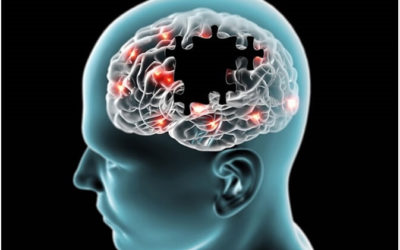Hyperbaric Therapy As Treatment For Parkinson’s Disease


Hyperbaric Oxygen Therapy decreases inflammation, oxygenates the entire body, stimulates the growth of new healthy blood vessels, and releases stem cells, up to 800% more after twenty sessions! Research suggests that HBOT can improve neurological outcomes by increasing enzymes in the body that protect cells and prevents neuronal damage. It has also been shown to decrease depression, anxiety, and tremors in patients with Parkinson’s Disease.
Source: https://oxfordrecoverycenter.com/conditions/parkinsons-disease/
“Parkinson’s disease is a progressive neurodegenerative disorder in the elderly that is characterized by typical motor symptoms such as resting tremors, rigidity, bradykinesia, and gait disturbances (Adler, 2005). The conventional therapy using levodopa and dopamine agonists for Parkinson’s disease focuses primarily on relieving motor symptoms. Another therapy for Parkinson’s disease includes chronic exercise (Bergen et al., 2002, Hirsch et al., 2003; Pothakos et al., 2009). However, it is difficult to completely prevent the degeneration of dopaminergic neurons with these therapies.
Exposure to mild hyperbaric oxygen at 1266–1317 hPa with 35–45% oxygen increases the level of oxygen in blood, especially the oxygen dissolved in blood plasma, and facilitates oxidative metabolism in the mitochondrial tricarboxylic acid cycle in cells and tissues (Ishihara et al., 2005, Matsumoto et al., 2007). Metabolic syndrome (Takemura and Ishihara, 2017), lifestyle-related diseases (Gu et al., 2010, Nagatomo et al., 2010a, Nagatomo et al., 2011), and arthritis (Nagatomo et al., 2010b) are inhibited and/or improved when rodents are exposed to mild hyperbaric oxygen.
Parkinson’s disease results from the progressive decrease of dopaminergic neurons in the substantia nigra (Dauer and Przedborski, 2003) although the mechanisms for this decrease have not fully been clarified. It is suggested that exposure to mild hyperbaric oxygen inhibits the decrease in dopaminergic neurons, which would result in an improvement of Parkinson’s disease because of the enhancement of oxidative metabolism in dopaminergic neurons.
All experimental and animal care procedures were approved by the Guidelines for the Care and Use of Laboratory Animals issued by the Institutional Animal Experiment Committee of Kyoto University (Kyoto, Japan) and conducted in accordance with the National Institute of Health Guide for the Care and Use of Laboratory Animals. All efforts were made to minimize both the number of animals used and their suffering.
This study examined the effects of exposure to mild hyperbaric oxygen on motor functions and dopaminergic neurons in the substantia nigra of mice with MPTP-induced Parkinson’s disease. Exposure to mild hyperbaric oxygen improved motor functions in mice with Parkinson’s disease; the number of times that the mouse’s feet slid off the stick decreased following exposure to mild hyperbaric oxygen in the PDO group (Fig. 1C). We observed that exposure to mild hyperbaric oxygen facilitates oxidative metabolism, particularly in pathways in the mitochondrial tricarboxylic acid cycle, thus enhancing the oxidative capacity of skeletal muscle fibers and the spinal motoneurons innervating them (Ishihara et al., 2005, Matsumoto et al., 2007). It is suggested that exposure to mild hyperbaric oxygen has an effect on the neuromuscular system, which is largely related to motor functions in mice with Parkinson’s disease. Therefore, the number of times that the mouse’s feet slid off the stick was decreased by exposure to mild hyperbaric oxygen. In contrast, there were no effects of exposure to mild hyperbaric oxygen on the amount of time before the mouse dropped off the cylinder (Fig. 1A) or the time taken by the mouse to move a distance of 50 cm on the stick (Fig. 1B). The reasons for differences in the motor function of these tests were not elucidated in this study. Multiple performance tests (e.g., rotarod, balance beam, pole, and open-field tests) are required for the evaluation of motor functions in mice with Parkinson’s disease, because of behavioral anomalies in individual mice.
The decrease in the number of dopaminergic neurons in the substantia nigra of mice with Parkinson’s disease was inhibited by exposure to mild hyperbaric oxygen (Fig. 3). Increased atmospheric pressure, accompanied by a high oxygen concentration, enhances the partial pressure of oxygen and increases dissolved oxygen in blood plasma (Ishihara et al., 2014). When water vapor pressure, concentration of carbon dioxide in the alveolus, and the respiratory exchange ratio are set at 47 mmHg, 40 mmHg, and 0.85, respectively, the estimated levels of oxygen dissolved in blood plasma under mild hyperbaric oxygen conditions at 1317 hPa with 45% oxygen (1.18 ml/dL blood plasma) are 3.7 times those under normobaric conditions at 1013 hPa with 20.9% oxygen (0.32 ml/dL blood plasma). Exposure to mild hyperbaric oxygen enhances the oxidative capacity of pathways in the mitochondrial tricarboxylic acid cycle, thus improving oxidative metabolism in cells and tissues. Therefore, we hypothesized that exposure to mild hyperbaric oxygen inhibits the decrease in dopaminergic neurons induced by Parkinson’s disease, because it activates oxidative metabolism in the dopaminergic neurons. It is suggested that peroxisome proliferator-activated receptor-γ coactivator 1-α (PGC-1α) is one of the factors that contributes to the improvement in oxidative metabolism of dopaminergic neurons in Parkinson’s disease, because cell oxidative metabolism, mitochondrial biogenesis, oxidative stress, and gene expression are regulated by PGC-1α, which is a transcriptional coactivator (Wu et al., 1999, Liang and Ward, 2006). A previous study (Mudò et al., 2012) observed that transgenic mice overexpressing PGC-1α are resistant to both dopaminergic neuron degeneration in the substantia nigra and dopamine disappearance in the striatum.
Hyperbaric oxygen therapy, which is an established medical treatment and is usually conducted under conditions of 2026–3039 hPa with 100% oxygen, induces many diseases and complications, including atherosclerosis, cataract, retinopathy, myocardial infarction, hypertension, diabetes, renal failure, and uremia (Padgaonkar et al., 2000, Griendling and FitzGerald, 2003, Oter et al., 2005, Oter et al., 2007, Gesell and Trott, 2007). Excessive atmospheric pressure and oxygen concentration, especially in treatments with 100% oxygen, have been shown to increase the number of invasive inflammatory cells (Folz et al., 1999) and cause excessive production of reactive oxygen species in several tissues and organs (Narkowicz et al., 1993). In this study, the condition of mild hyperbaric oxygen was produced using 1317 hPa and 45% oxygen. Such side effects, including oxidative stress and barotrauma, are not induced by these conditions (Nagatomo et al., 2012). Exposure to mild hyperbaric oxygen also poses negligible risk of fire and explosion because of relatively low atmospheric pressure and oxygen concentration.
We conclude that exposure to mild hyperbaric oxygen at 1317 hPa with 45% oxygen inhibits the decrease of dopaminergic neurons, which results in the improvement of Parkinson’s disease because it activates oxidative metabolism in dopaminergic neurons.”
Source: https://www.sciencedirect.com/science/article/pii/S0168010217304832



